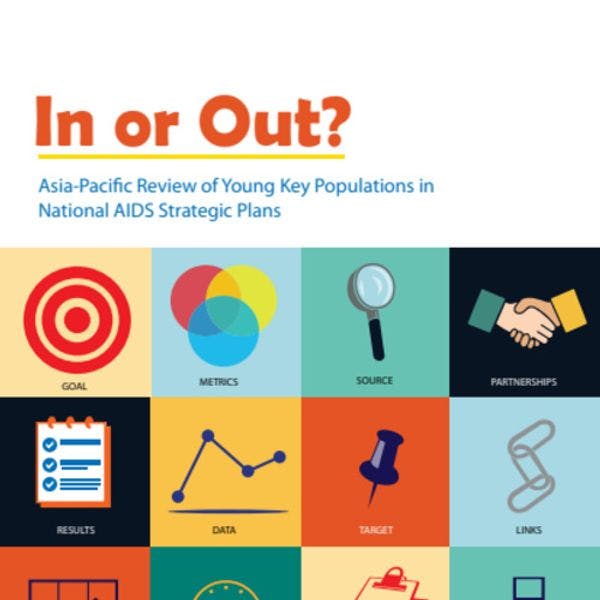Intégrés ou non? Rapport sur la région Asie-Pacifique concernant l’intégration des jeunes populations clés au sein des plans stratégiques nationaux sur le sida
Ce rapport examine l’importance accordée aux jeunes populations clés au sein des plans stratégiques nationaux en matière de sida dans la région Asie-Pacifique. Pour en savoir plus, en anglais, veuillez lire les informations ci-dessous.
Abonnez-vous à l'Alerte mensuelle de l'IDPC pour recevoir des informations relatives à la politique des drogues.
National strategic frameworks or plans (NSPs) determine a country’s national response to HIV and AIDS, guiding allocation of funding, resources and human capacity. They provide a vision of the results a country wants to achieve and the approach for reaching these results over a period of time.Previous reviews of NSPs have found they often lack clear goals and priorities, cost estimates, plans for resource mobilisation, and interventions that are efficient, reliable and feasible. Many plans are not strategic, include limited situational analysis and do not identify the key drivers of the epidemic and the programmes necessary to reverse its course.
In Asia, it has been estimated that more than 95 per cent of all new infections among young people are occurring among young key populations at higher risk of HIV exposure. Behaviours which place young people at a higher risk for HIV infection such as unprotected paid sex, unprotected sex between males, and the sharing of contaminated injection equipment, often start at an early age.
It can be difficult for young people, including those from key populations, to access HIV-related information and services. Barriers to access may hinge upon social, cultural, religious, financial, logistical, or legislative issues. These mean young key populations are more likely to have a poor understanding of HIV, inadequate access to health and support services as well as greater engagement in high-risk behaviours. In many countries this is translating into early HIV infection and the potential for escalated growth of the epidemic.
To better understand how countries are tackling the HIV epidemic among young key populations, a number of agencies agreed to partner to investigate how these groups were being addressed in national AIDS strategic plans in the Asia-Pacific region.
This report is the outcome of this effort, and aims to inform country-based reviews and progress reports of current NSPs, and the development of future plans with greater attention to these populations.
Keep up-to-date with drug policy developments by subscribing to the IDPC Monthly Alert.
Téléchargements
Sujets
Régions
Profils associés
- World Health Organization (WHO)
- United Nations Development Programme (UNDP)
- Joint United Nations Programme on HIV and AIDS (UNAIDS)
- Global Network of People Living with HIV (GNP+)
